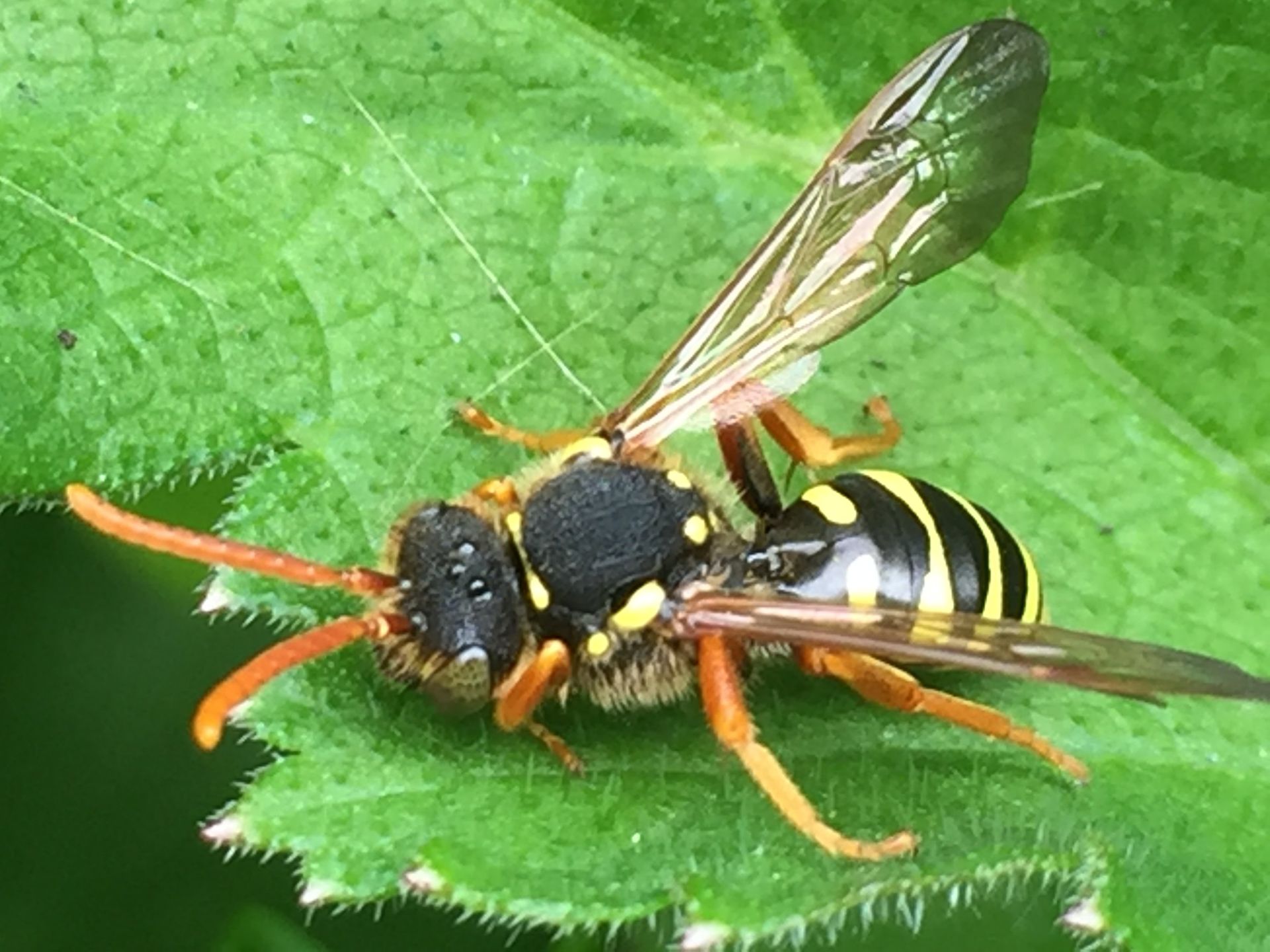Who's who of British Bees
The UK has 276 species of bee recorded, many of which can be found in Urban parks and gardens. Over half of them can be found in our capital city London - all are important pollinators of food crops and wild plants, providing valuable ecosystems services.
Bees vary greatly in shape, size and colour and can be found in a wide variety of habitats. Some London parks support up to 50 different species so you don’t have to look far to discover a wide range of bees.
Whilst Honey Bees are currently enjoying a period of revival and increase in numbers many of our wild bees continue to struggle to survive. On this page we’ll cover some of the more frequently seen wild bees found in London.
UK bees are classified into 6 families each containing numerous genera and individual species. Below is a Phylogenetic tree illustrating how they are related.

Colletidae are a cosmopolitan group of bees with short tongues which nest in underground burrows.
The Colletes
Bees
are sometimes known as ‘Plasterer Bees’ because they produce a cellophane like resin to line their underground nest burrows.
Representatives common in London include the Honey Bee sized 'Ivy Mining Bee' Colletes hedera. This bee is an Ivy specialist emerging in September and the largest member of the family. Colletes hedera is a recent addition to the UK and is currently expanding northwards into northern England and Scotland. Its an example of a species which has naturally colonised the Uk on its own.
Davies Mining Bee Colletes daviesanus is a smaller plasterer bee which is active mid-summer and frequents composite flowers like Oxe-Eye Daisy and Achillea.
The Colletidae also includes the Hylaeus
bees
known as Yellow Faced Bees for their distinctive facial markings.
Hylaeus bees favour composite flowers and can often be found on Astrantia blooms and Sea Holly Eryngium
which are commonly grown in gardens.
One of the most widespread representatives of this genus is the Common Yellow Faced Bee Hylaeus communis.
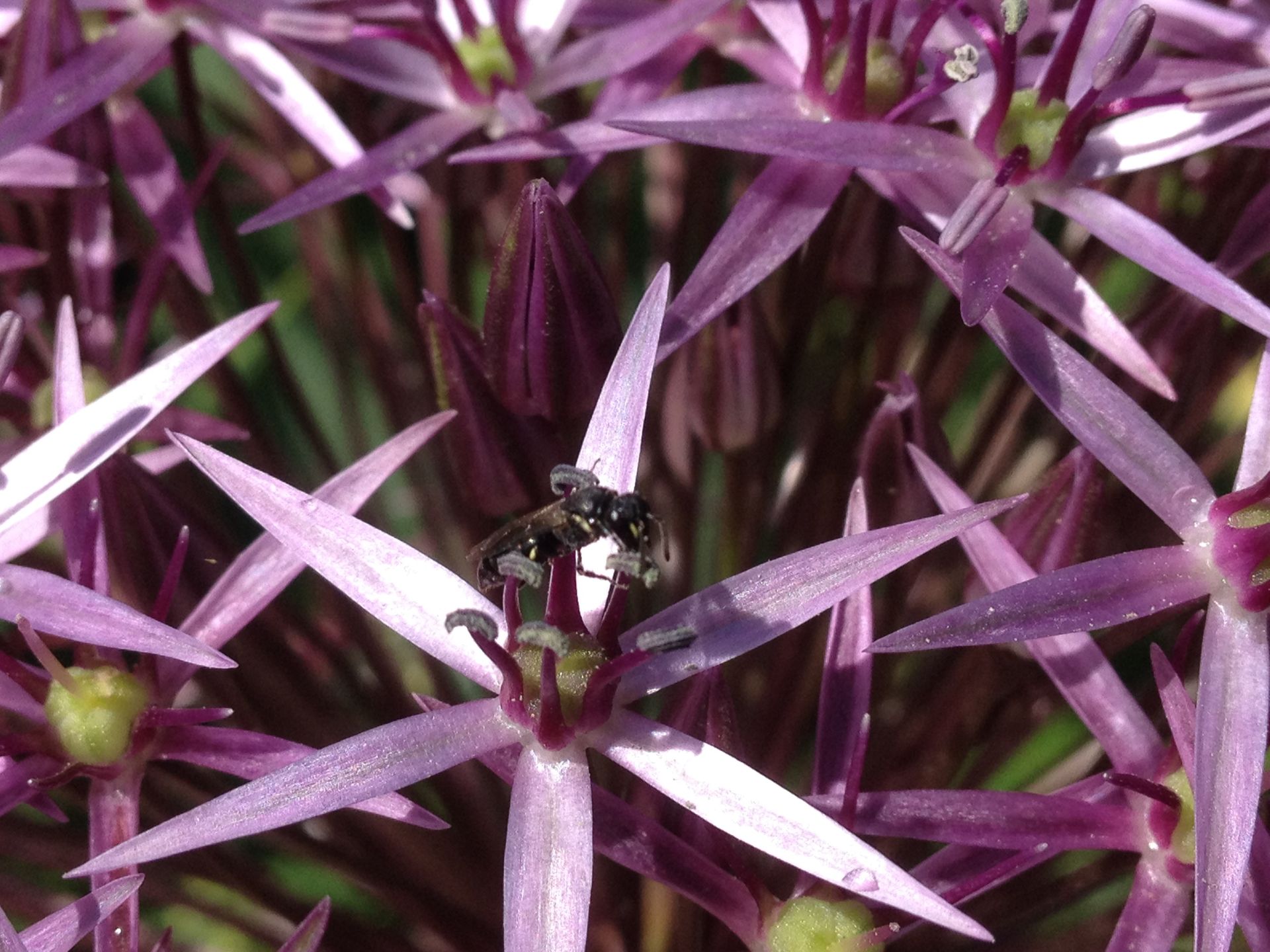
Andrenidae
is the second largest family of bees in the UK with 69 species many of which collect pollen on their rear legs as Honey and Bumble Bees do.
A great many of London’s ground nesting solitary bees belong to the
Andrena
genus of which there are 67 species.
These bees excavate underground burrows in compact soils, lawns and cliff faces, Burrows may be up to a meter deep.
Common examples in the city include the ginger Tawny Mining Bee Andrena fulva, the Chocolate Mining Bee Andrena scottica which can form large nesting congregations, Ashy Mining Bee Andrena cineria and the Painted Mining Bee Andrena nitida.
Andrena bees are the preferred host for a number of cuckoo bees in the Nomada genus.
The family also contains the
Pangarus
bees of which there are 2 UK species.
Halictidae
family contains the Halictus
Bees also known as Furrow Bees, the Lassioglossum
or ‘Sweat Bees’ and the Sphecodes
or ‘Blood Bees’ named because of their blood red colouration.
Other less well known members of the family include the Dufourea
( 2 species in the UK) and Rophites
genus (1 single UK species).
Some of these bees are primitively Eusocial. All have short tongues and prefer simple open type flowers. These very small bees are attracted to garden plants like Astrantia, Alliums, Thyme, Eryngium and Solidago.
Common examples found in London include the Slender Mining Bee Lassioglossum calceatum and the metallic green Lasioglossum morio.
Melittidae
contains the
Melitta
Bees,
Macropis or Oil Collecting bees and the
Dasypoda bees of which there is a single UK representative.
Melitta Bees are a small and specialised family of bees restricted to chalk grassland with 4 species found in the UK.
Two of these bees can be found at a number of sites in central London.
The Clover Bee Melitta leporina
can be found in East London on remnants of chalk grassland and on industrial wasteland where crushed concrete and rubble mimics the chalk soils their food plants rely on.
The Gold Tailed Bee Melitta haemorrhoidalis
is a specialist of bell flowers (campanulas) and can be found in the Rose Gardens of Hyde Park and suburban gardens where it collects pollen from Canterbury Bells, Nettle Leaved Bellflower and Carpet forming Bellflowers.
The Macropis bees have a single UK representative the Yellow Loosestrife Bee Macropis europaea
which collects oily secretions from Yellow Loosestrife flowers to line and water proof its nest burrows as it frequently nests in damp soils. They collect poll;en exclusively from Yellow Loosestrife flowers which typically grow in damp ground around pond margins.
Right: Clover Melitta bee Melitta leporina
Megachilidae
family includes the Heriades
Resin Bees, Osmia
Mason, Megachile
Leafcutter, Anthidium
Wool Carder bees, Stelis
bees, Chelostoma
or ‘Scissor Bees’, Hoplitis
or Lesser Mason Bees and the Coelioxys
or ‘Sharp Tailed Bees.’
These bees excavate nest burrows in vertical surfaces such as walls, chalk and clay banks, decaying timber and hollow plant stems. They readily use solitary bee hotels and are easy to attract into your gardens.
Examples found throughout London include the highly territorial Wool Carder Bee Anthidium manicatum, Red Mason Bee Osmia bicornis
and the Bellflower Scissor Bee Chelostoma campanularum –
a tiny black bee no bigger than an ant which collects pollen exclusively from Bell flowers.
any species in this group of bee collect plant fibres to line their nests, others use mud to plug their nest tubes.
The Vipers Bugloss Mason Bee Hoplitis adunca
is a bee unique to London within the British Isles. It was discovered in Britain for the first time in 2016 at Greenwich Ecology Park in South East London.
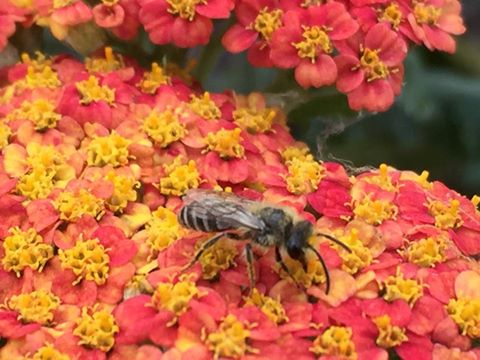
Above: Colletes daviesanus bee on garden Achillea
Below: A Hylaeus bee on Astrantia blooms
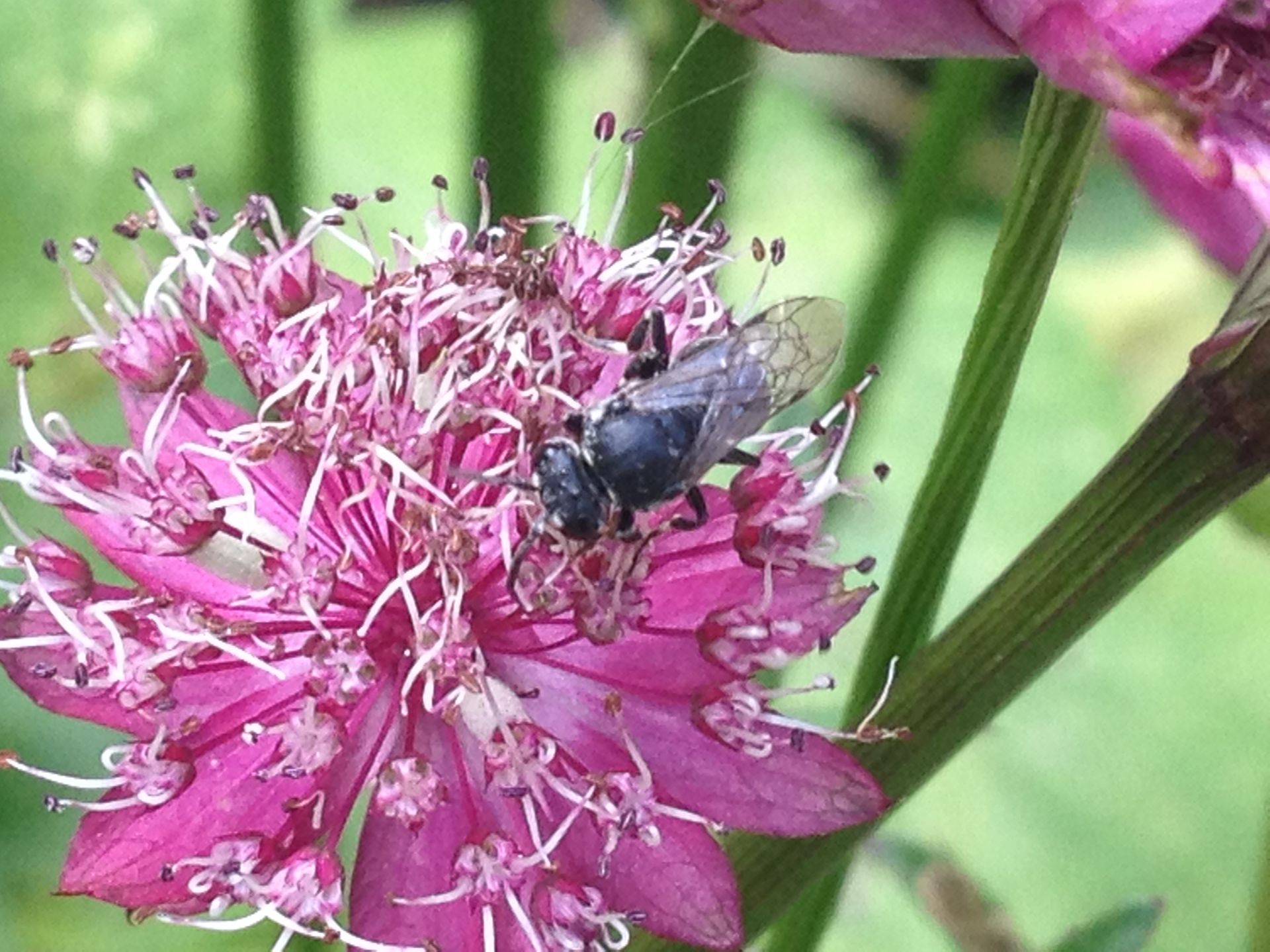
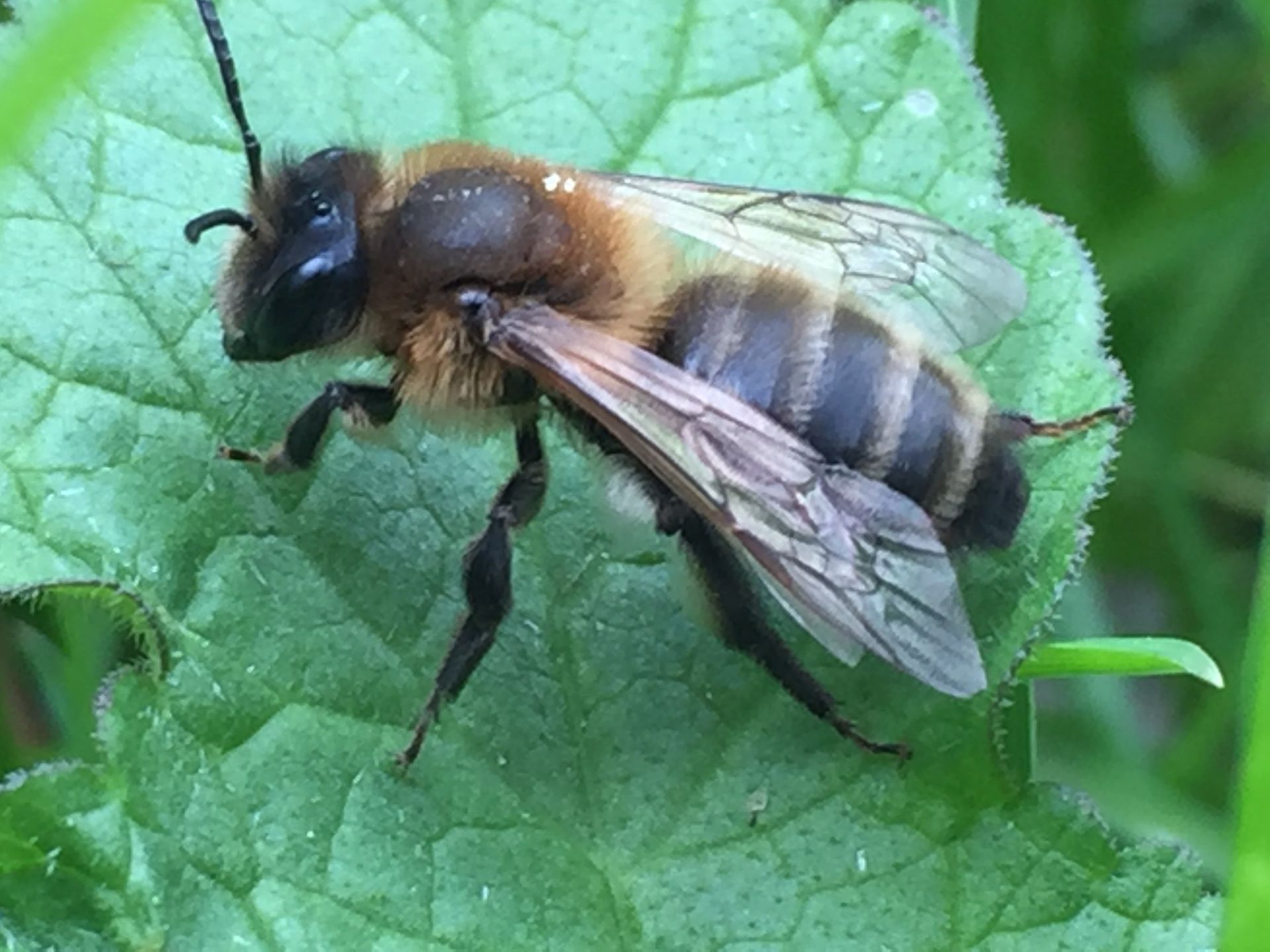
Above a Chocolate Mining Bee Andrena scottica.
Below in descending order: Painted Mining Bee Andrena nitida
and Tawny Mining Bee Andrena fulva.
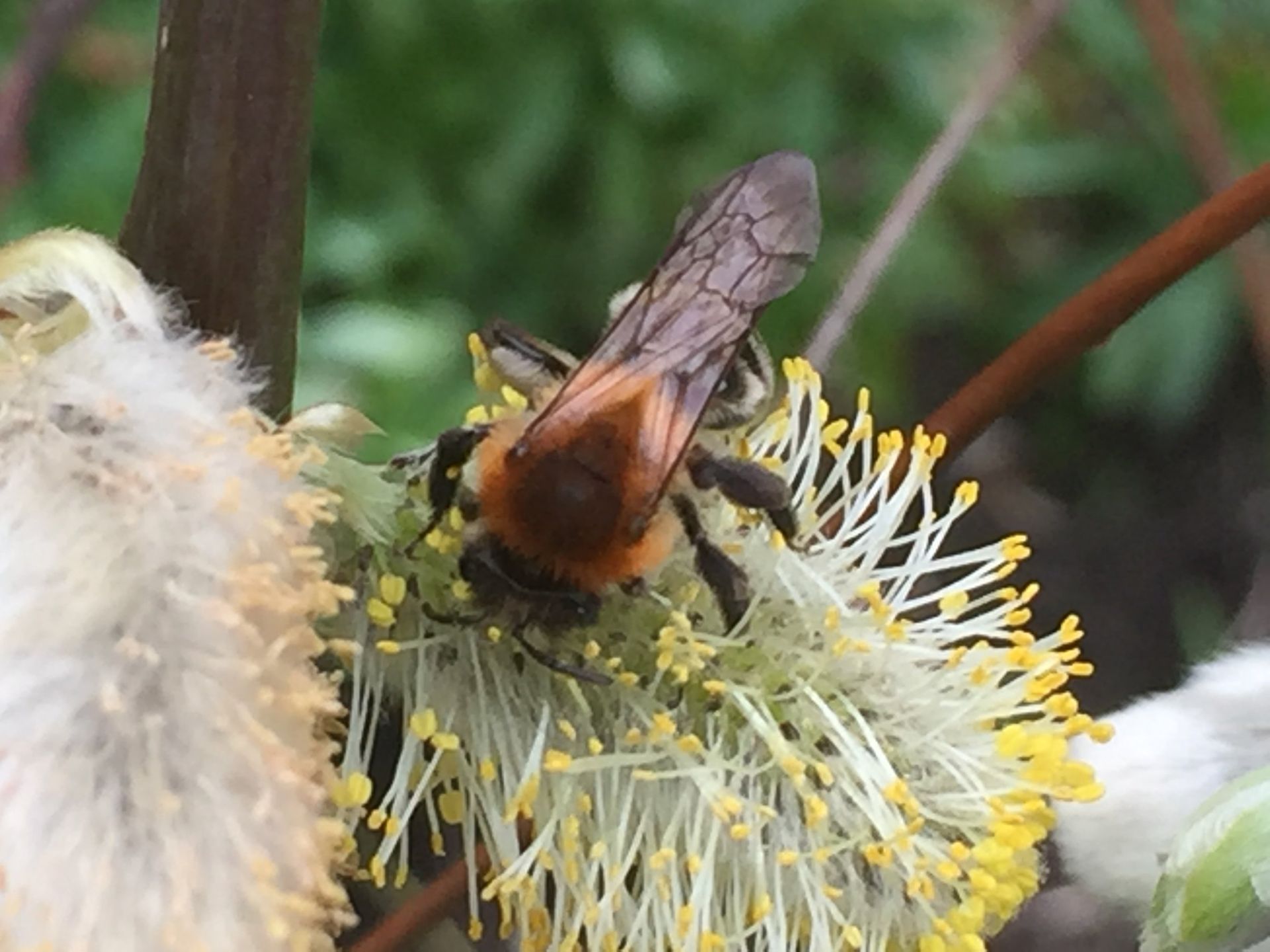
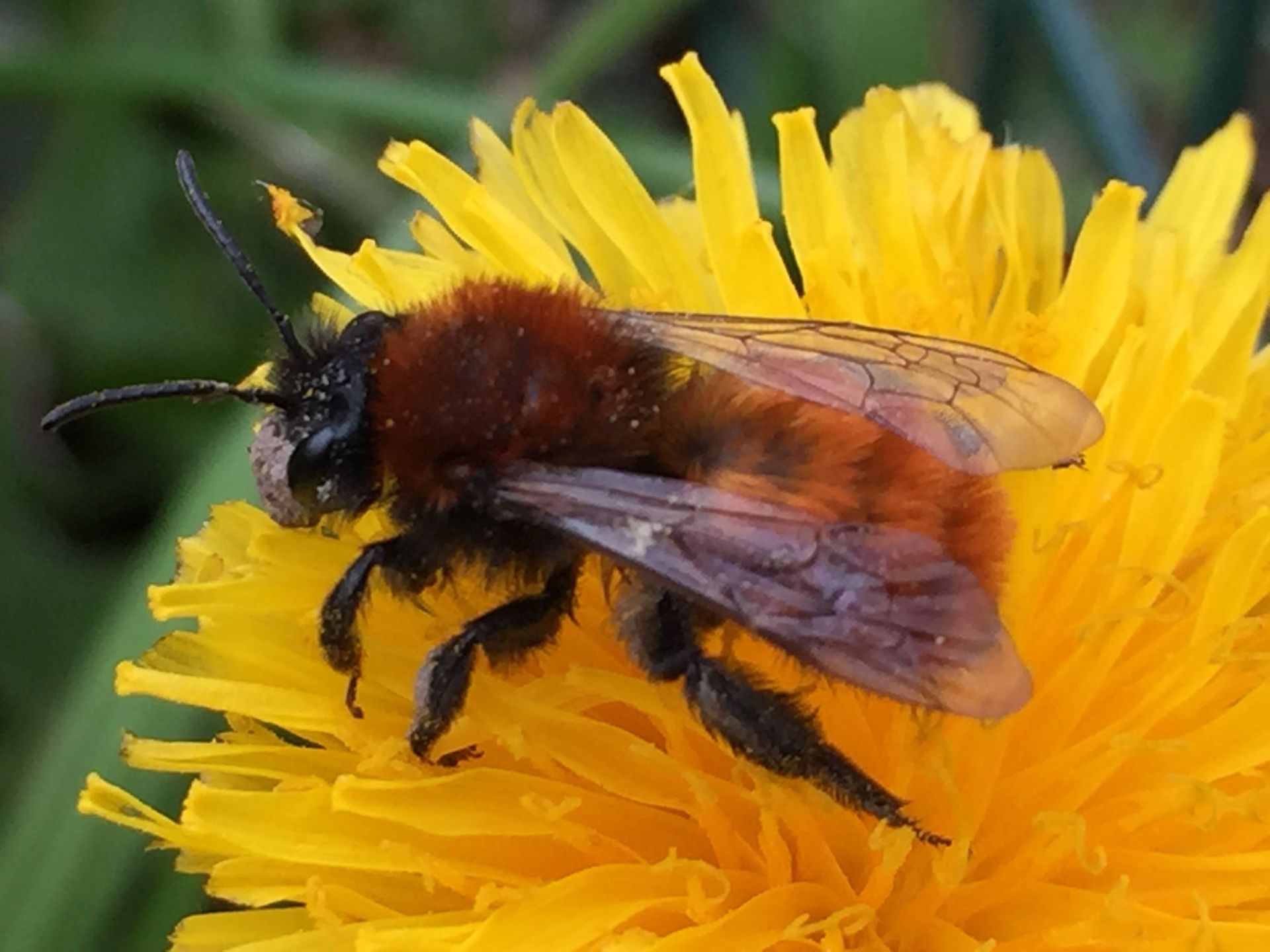
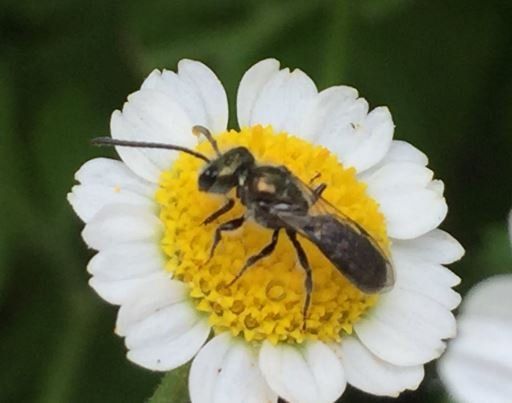
Above Lassioglossum morio and below Lassioglossum Calceatum
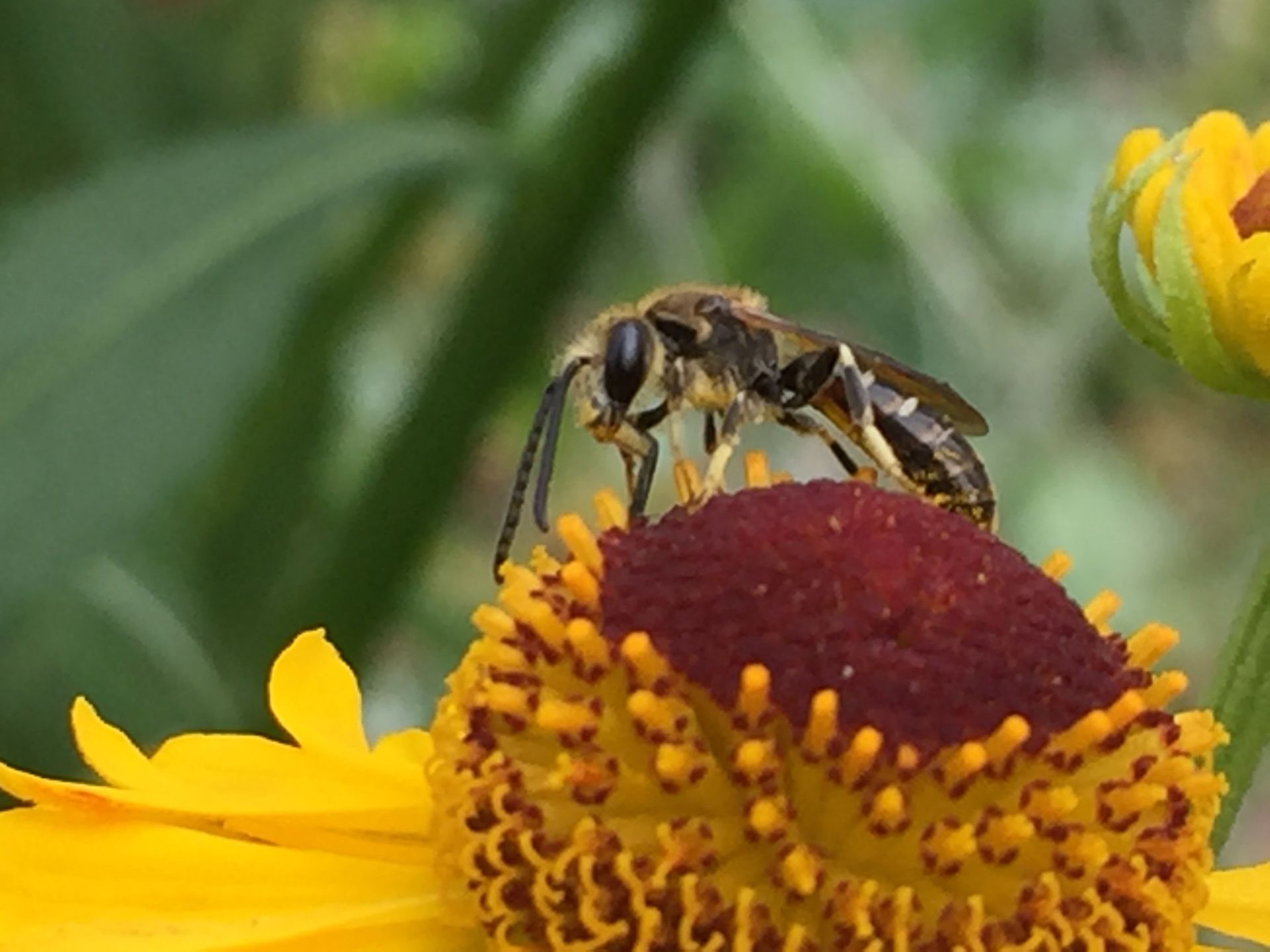
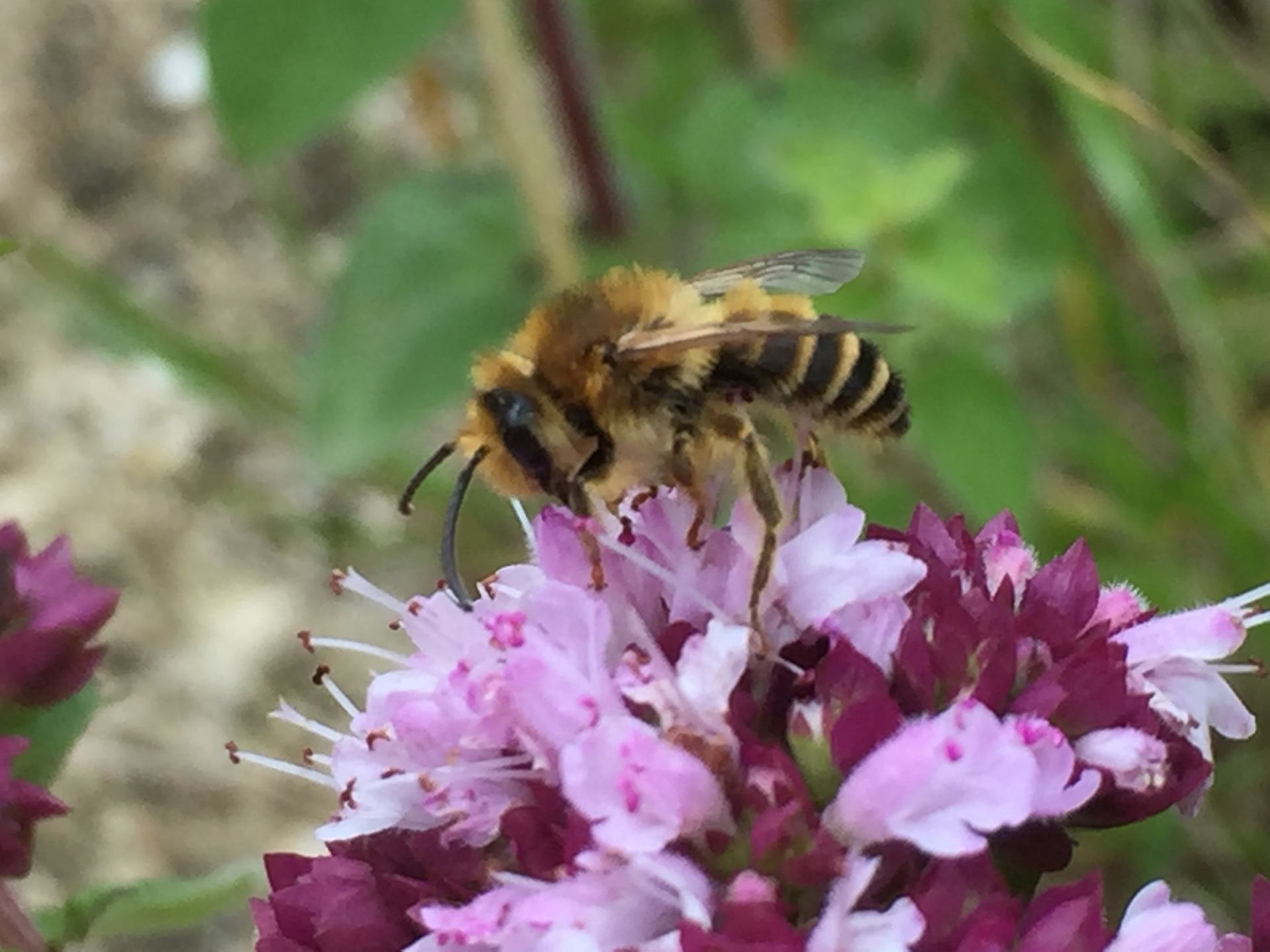
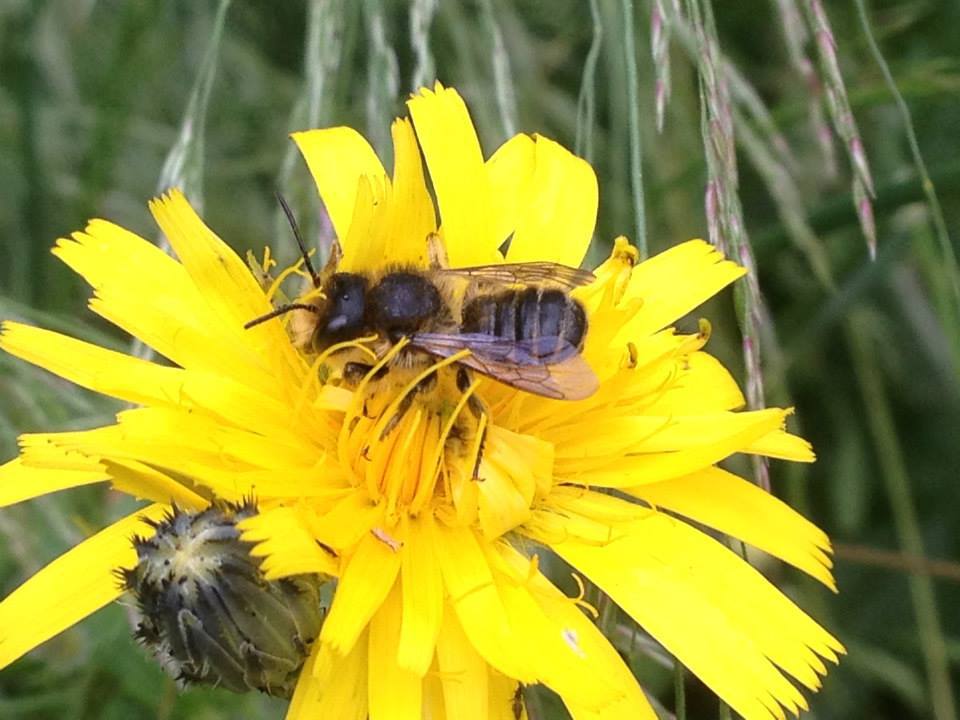
Above an Osmia Bee nectars on a Catsear flower.
Below left to right Orange Vented Mason Bee Osmia leaiana, Chelostoma campanularum
and a Wool Carder Bee Anthidium manicatum.
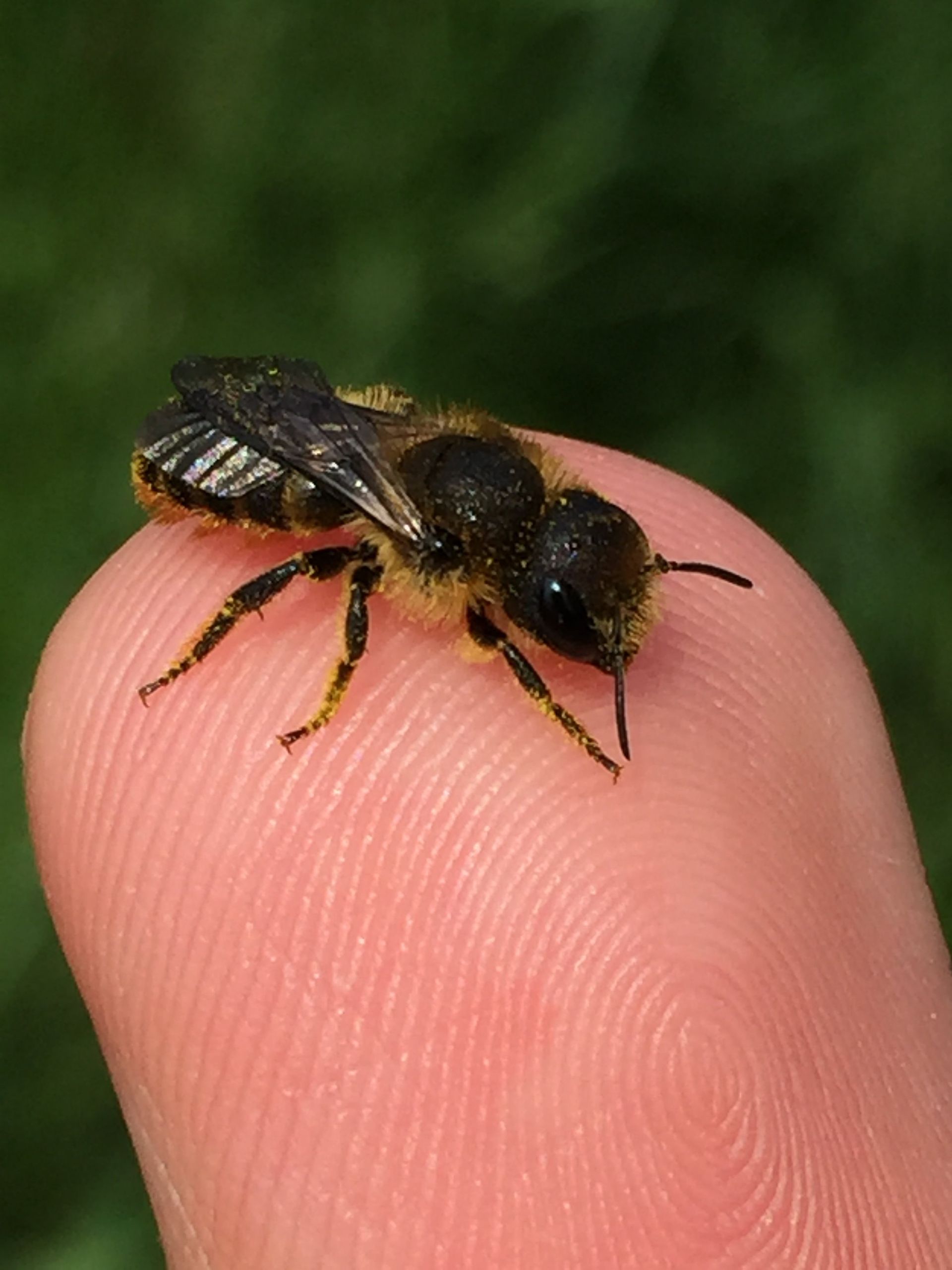
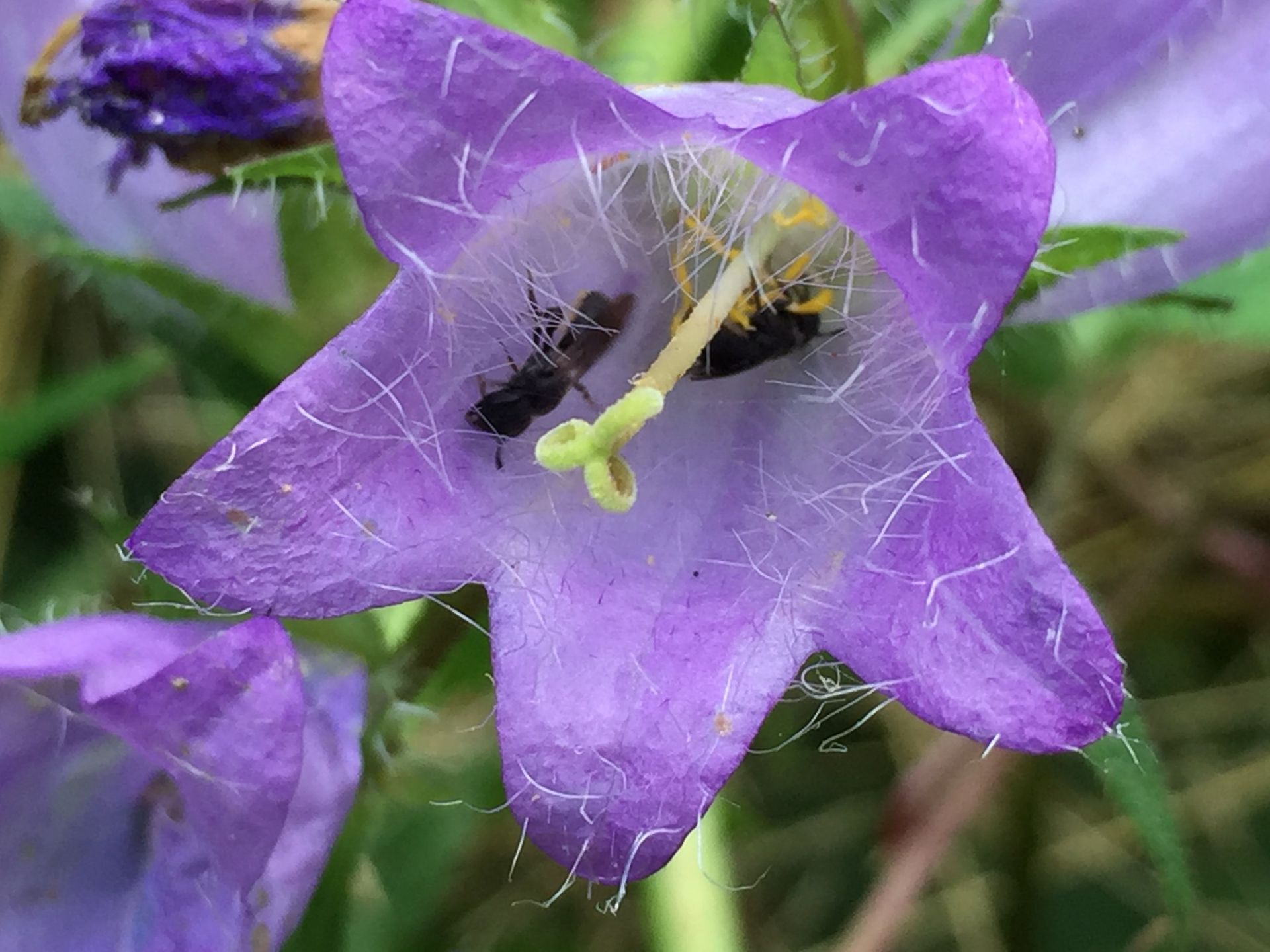
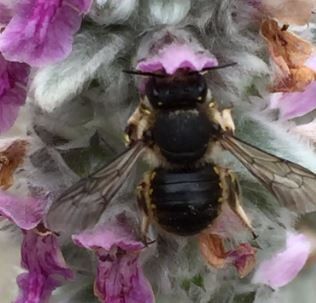
Apidae
is a huge cosmopolitan group of bees which includes the
Honey Bee Apis mellifera,
Bumble Bees,
Cuckoo Bees,
Long Horned Bees,
Anthophora Flower Bees,
Melecta
Mourning Bees and Large Carpenter Bees
Xylocopa. Apidae is the largest family of UK bees.
The
Honey Bee
Apis mellifera
is London’s most numerous bee and bee of least conservation concern. These bees form huge colonies of tens of thousands of workers usually headed by a single queen. They are the only European bee to produce honey which can be harvested.
There are 27 species of
Bombus or Bumble bee
in the UK which vary in size and colour. Many are black and yellow with coloured tails, some are mostly black and some are mostly brown. All are covered in a dense pile of fur. 8 species are common and widespread throughout London. These bees form small colonies up to 200 workers and a single queen. Some bumble bees such as the Southern Cuckoo Bee Bombus vestalis
are nest parasites of other Bumble bees taking over an established nest and subduing the resident queen.
Several very rare bumble bees can also be found within Greater London including the Moss Carder Bee Bombus muscorum
and Brown-banded Carder Bee Bombus humilis. Both can be found in the east of the city around the Thames Gateway
The Flower Bees of the genus
Anthophora
are solitary species, many of which can be found in London. The most numerous and recognisable member of the group is the Hairy Footed Flower Bee Anthophora plumipes
which is one of our first bees to emerge in spring. They have exceptionally long tongues used to access the nectar of Pulmonaria flowers. They are unusual among UK bees demonstrating extreme sexual dimorphism with females being all black with red hairs on their hind legs and buff coloured males sporting yellow faces. These bees often nest in old walls and chimneys where they excavate burrows in decaying mortar.
Less frequently seen but widespread in London are their cousins the ‘Green Eyed Flower Bee’ Anthophora bimaculata
and the ‘Fork Tailed Flower Bee’ Anthorphora furcata.
The
Mourning Bee
Melecta albifrons
is a nest parasite of the Hairy Footed Flower Bee and can often be found close to their hosts nesting aggregations.
The
Nomada
Bees are a group of wasp like kleptoparasite bees which sneak their eggs into the nests of Andrena species. When their eggs hatch they firstly eat the hosts eggs and offspring before then consuming the host bees pollen cache. ‘Goodens Nomad’ Nomada Goodeniana
is the easiest of the 34 species to identify, many of the others require microscopic examination to identify them to species level.
Large Carpenter Bees include the massive bright purple ‘Violet Carpenter Bee’ Zylocopa violacea
– the UK's largest bee. Widespread and common on the continent this species favours a warm climate and is a recent addition to the British Isles. This bee is expanding its range and with climate change could soon join the list of London Bees.
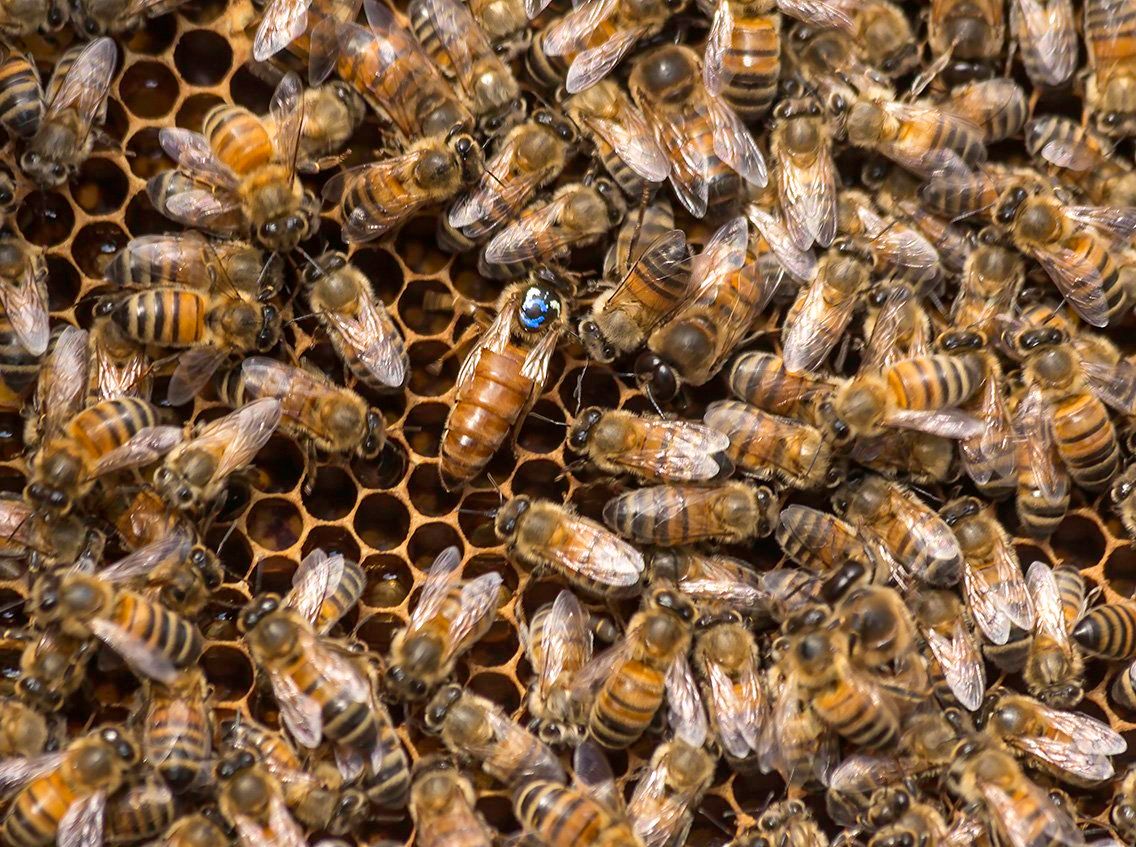
Above: Honey Bees and Below: a Bumble Bee
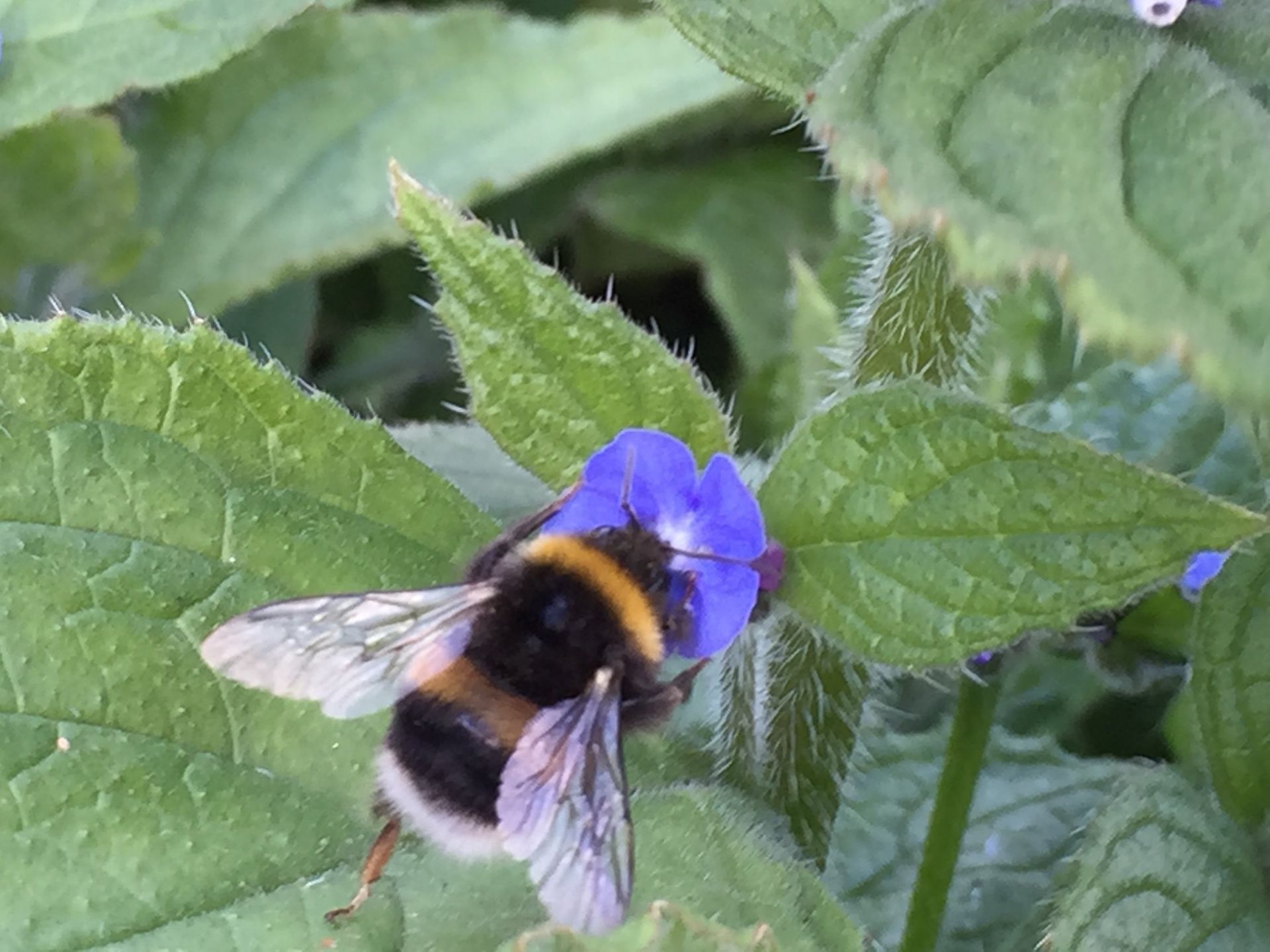
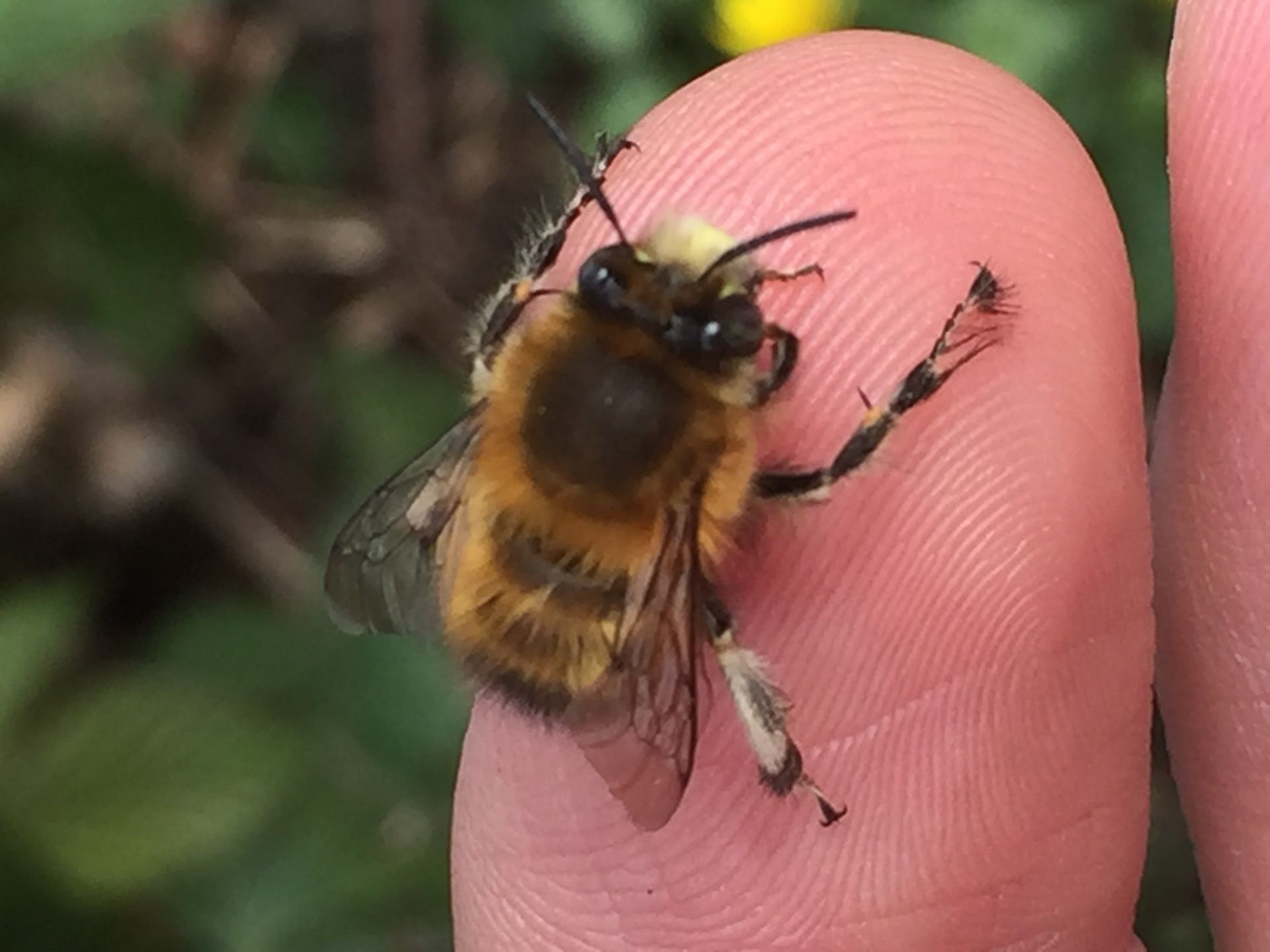
Above: a male Hairy Footed Flower Bee Anthophora plumipes and below: A Nomada goodeniana cuckoo bee
